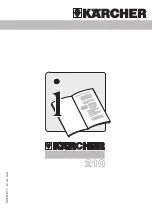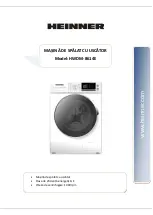
2. INTrODucTION
lightweight, portable cordless pressure washer. ideal for a range of domestic applications including cleaning vehicles, motorcycles and
bicycles. Features 17ltr water tank which can be detached from base for easy re-filling. Unit can be powered using vehicle’s 12V socket, but
is also fitted with a rechargeable lead acid battery which provides up to 40 minutes of continuous use. Ideal pressure washer where no mains
electric supply is available, such as classic car shows and track days. Supplied with 6mtr hose, variable nozzle and fixed brush, both fitted with
built-in detergent bottle. fitted with accessory storage pouch, durable wheels and shoulder strap for easy transportation.
3. specIFIcaTION
model no: ................................................................. PW1712
Battery type: ...........................................................lead acid
maximum Pressure: ......................................... 8.5bar/123psi
Water flow rate: .....................................................2.5ltr/min
motor Power: ...................................................................60W
supply: ........................................................................
12V dc
Hose length: ...................................................................6mtr
charging time: ................................................................ 6hrs
operating time: .....................................................20-40mins
Weight: .......................................................................... 7.5kg
4. OperaTION
4.1.
Filling
4.1.1.
To detach the tank from base, turn tank by ¼ turn anti-clockwise (fig.2) and lift off.
4.1.2.
Unscrew tank cap and fill from tap; replace cap.
4.1.3.
re-attach tank to base by pushing down and turning clockwise to lock.
4.1.4.
Do not fill tank with detergent. Use detergent bottles supplied with the machine. Failure to do so may invalidate the warranty.
4.2.
power supply
4.2.1.
The washer can be powered either directly from the vehicle’s 12V accessory socket or from the internal 12V battery.
4.2.2.
To select which power source to use, move the rocker switch (fig.4) to the appropriate setting. The centre (“O”) setting is the “OFF”
position.
4.2.3.
If using the12V accessory socket, plug the adaptor (fig.3) into the vehicle. It is advisable to leave the vehicle engine running whilst
using the washer in this mode. switch off and disconnect from the vehicle when not in use.
4.2.4.
for battery charging details, see section 5.
4.3.
pressure washing
4.3.1.
Connect hose and gun (fig.5) to the machine by pulling the connector on the hose back and pushing the hose onto the gun.
4.3.2.
When connected, the pump will build up initial pressure and stop until the trigger (fig5.A) is pulled to release the pressurised water.
The trigger can be locked on by pushing forward fully as in fig.6.
4.3.3.
The spray pattern may be adjusted by rotating the collar (fig 5.B) as in fig.6.
4.3.4.
The unit is fitted with an automatic stop switch that will turn the pump off when the trigger is released.
4.3.5.
always discharge the pressure in the hose before removing tools.
4.4.
Detergent Dispenser
4.4.1.
The detergent bottle (fig.5.C) can be removed by unscrewing from the nozzle body.
4.4.2.
When filled with appropriate detergent, invert the body and screw the bottle in place.
4.4.3.
The detergent flow is started by moving the control lever (fig.5.D) fully clockwise and vice-versa.
4.4.4.
the detergent is dispensed by being displaced by water from the nozzle: the level of the detergent does not go down, but the strength
is diluted by the incoming water.
4.4.5.
When the detergent has been exhausted, remove the bottle, empty and refill with neat detergent.
4.5.
brush attachment
4.5.1.
To attach the brush to the nozzle: unscrew collar (fig.5.B) as far as possible and then pull to remove. Replace with the brush
attachment, locking in by locating the lugs on the brush in the holes in the nozzle body (fig.7.A)
PW1712 | issue 3 08/05/17
Original Language Version
© Jack sealey limited
fig.1
fig.2





















